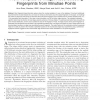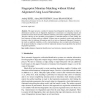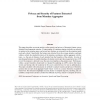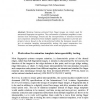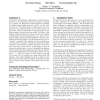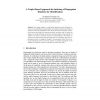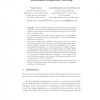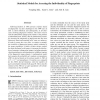124
click to vote
PAMI
2007
15 years 10 days ago
2007
—Most fingerprint-based biometric systems store the minutiae template of a user in the database. It has been traditionally assumed that the minutiae template of a user does not r...
113
Voted
INFORMATICALT
2008
15 years 25 days ago
2008
This paper presents a method of minutiae based fingerprint matching that is robust to deformations and does not do fingerprint alignment. It concentrates on comparing rotation and ...
93
Voted
ICASSP
2010
IEEE
15 years 1 months ago
2010
IEEE
This paper describes our recent analysis on the security and privacy of biometric feature vectors obtained from fingerprint minutiae. A large number of contiguous regions (cuboid...
95
Voted
ICVGIP
2004
15 years 2 months ago
2004
Most fingerprint matching systems are based on matching minutia points between two fingerprint images. Each minutia is represented by a fixed number of attributes such as the loca...
BIOSIG
2007
15 years 2 months ago
2007
: Minutiae features extracted from finger images are widely used for automated fingerprint recognition. The conformance of minutiae templates to standardised data interchange forma...
137
Voted
CCS
2006
ACM
15 years 4 months ago
2006
ACM
In biometric identification, a fingerprint is typically represented as a set of minutiae which are 2D points. A method [4] to protect the fingerprint template hides the minutiae b...
114
Voted
AVBPA
2001
Springer
15 years 5 months ago
2001
Springer
Abstract. This paper presents a model-based approach which efficiently retrieves correct hypotheses using properties of triangles formed by the triplets of minutiae as the basic re...
111
Voted
ICBA
2004
Springer
15 years 6 months ago
2004
Springer
The 9/11 tragedy triggered an increased interest in biometric passports. According to several sources [2], the electronic ID market is expected to increase by more than 50% per ann...
117
click to vote
AUTOID
2005
IEEE
15 years 6 months ago
2005
IEEE
Following Daubert in 1993, forensic evidence based on fingerprints was first challenged in the 1999 case of USA vs. Byron Mitchell, and subsequently, in 20 other cases involving...
104
Voted
ICB
2009
Springer
15 years 7 months ago
2009
Springer
Abstract. Fingerprints are considered to be unique because they contain various distinctive features, including minutiae, ridges, pores, etc. Some attempts have been made to model ...
